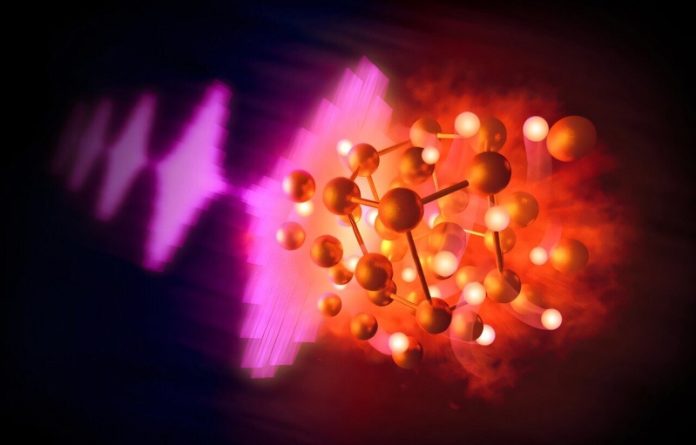
For the first time, scientists have made a solid compound of gold and hydrogen, known as gold hydride—completely by accident.
An international research team led by the U.S. Department of Energy’s SLAC National Accelerator Laboratory discovered the exotic material while running a very different experiment.
The researchers were originally studying how hydrocarbons—compounds made of carbon and hydrogen—turn into diamonds under extreme heat and pressure.
At the European XFEL (X-ray Free-Electron Laser) facility in Germany, they placed hydrocarbon samples in a device called a diamond anvil cell, which squeezed them to pressures even greater than those in Earth’s mantle.
They also inserted a thin piece of gold foil into the samples to absorb X-rays and heat the hydrocarbons.
When the samples were blasted with powerful X-ray pulses and heated to over 3,500 degrees Fahrenheit, the expected diamonds formed.
But to their surprise, the scientists also found something entirely new—hydrogen from the hydrocarbons had reacted with the gold foil to create gold hydride.
“It was unexpected because gold is typically chemically very boring and unreactive—that’s why we use it in these experiments,” said Mungo Frost, a staff scientist at SLAC who led the study. “These results suggest there’s potentially a lot of new chemistry to be discovered at extreme conditions.”
The discovery, published in Angewandte Chemie International Edition, shows how the familiar rules of chemistry can change in extreme environments like the interiors of planets or stars.
Under the intense pressure and heat, hydrogen entered a “superionic” state. In this state, the hydrogen atoms moved freely within the rigid structure of the gold’s atomic lattice, boosting the compound’s electrical conductivity.
Normally, hydrogen is difficult to study with X-rays because it doesn’t scatter them well. But in this experiment, the movement of hydrogen inside gold made its presence visible through changes in the way the gold lattice scattered X-rays.
By using gold as a “witness” to hydrogen’s behavior, scientists can study dense hydrogen in ways that could be useful for understanding the cores of giant planets or the processes powering stars like the Sun. This knowledge might also help in developing nuclear fusion energy technology on Earth.
The researchers found that gold hydride is stable only under extreme conditions. Once cooled, the gold and hydrogen separate. Simulations showed that at even higher pressures, more hydrogen atoms could fit into the gold lattice, and the same modeling tools could be applied to other metals.
“This work shows we can experimentally produce and model these extreme states,” said Siegfried Glenzer, director of SLAC’s High Energy Density Division. “The same approach could be used to explore other exotic materials that can’t exist under normal conditions.”
What began as a diamond-making experiment ended up opening a new chapter in high-pressure chemistry—proving that even “boring” gold can surprise us when pushed to the limits.



